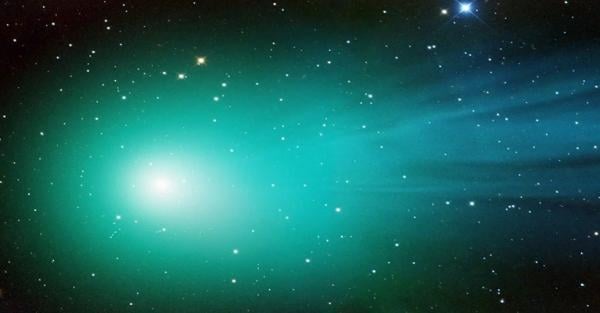SAN FRANCISCO, iNews.id – A team of chemists have just solved the mystery of why the head comet, but doesn’t the tail glow green? This incident baffled researchers for decades.
Studying the elusive molecule that exists only briefly on Earth is key. Comets accelerate chunks of ice and dust left over from the formation of the solar system, which sometimes venture out of the cold outer reaches of the system to pass Earth.
In the 1930s, Gerhard Herzberg, who later won the Nobel prize for his research on free radicals and other molecules, suggested that the process behind the glow of green comets may involve molecules made of two carbon atoms bonded together, called dicarbons.
The new study, published in the journal Proceedings of the National Academy of Science, puts Herzberg’s theory to the test. Dicarbon is so reactive that the team behind the research couldn’t get its supply from the bottle, said Tim Schmidt, the chemist who oversaw the research at the University of New South Wales in Sydney, Australia.
In space, it exists in stars, nebulae, and comets. But, says Schmidt, when exposed to oxygen in the Earth’s atmosphere, the dicarbon will react quickly and “burn”. Schmidt said this is the first time scientists have been able to examine exactly how the molecule breaks apart when exposed to strong ultraviolet light.
In the laboratory, the team had to simulate a near-Earth space environment with a vacuum and three different ultraviolet lasers. Because the dicarbon reacted so quickly, they had to synthesize it on the spot by cutting the larger molecule with a laser, according to Popular Science.
They confirmed the comet’s green glow came from molecules of dicarbon, which when exposed to sunlight in space, said Schmidt, could absorb and emit visible light. Herzberg was right about dicarbonate, he said, if not completely right about the mechanism — but that was the 1930s, Schmidt said, so “he could be forgiven.”
In comets, dicarbon is formed when sunlight heats ice, some of which may be made of acetylene, a mixture of hydrogen and carbon that, as a gas, is used on Earth for welding fuels. It could be produced in space when the more complex organic molecules in comets break down, Schmidt said.
According to Cochran, the hydrogen atoms break away from the acetylene molecules and without them, the bonds between the carbon atoms “tighten back up,” forming a double carbon molecule. When the sun heats the molecules in a comet’s body, they gain energy and light, but they break down into single carbon atoms before they can reach too far into the tail. This explains why the green light is only around the comet’s body, not its long tail.
Editor: Dini Listiyani


